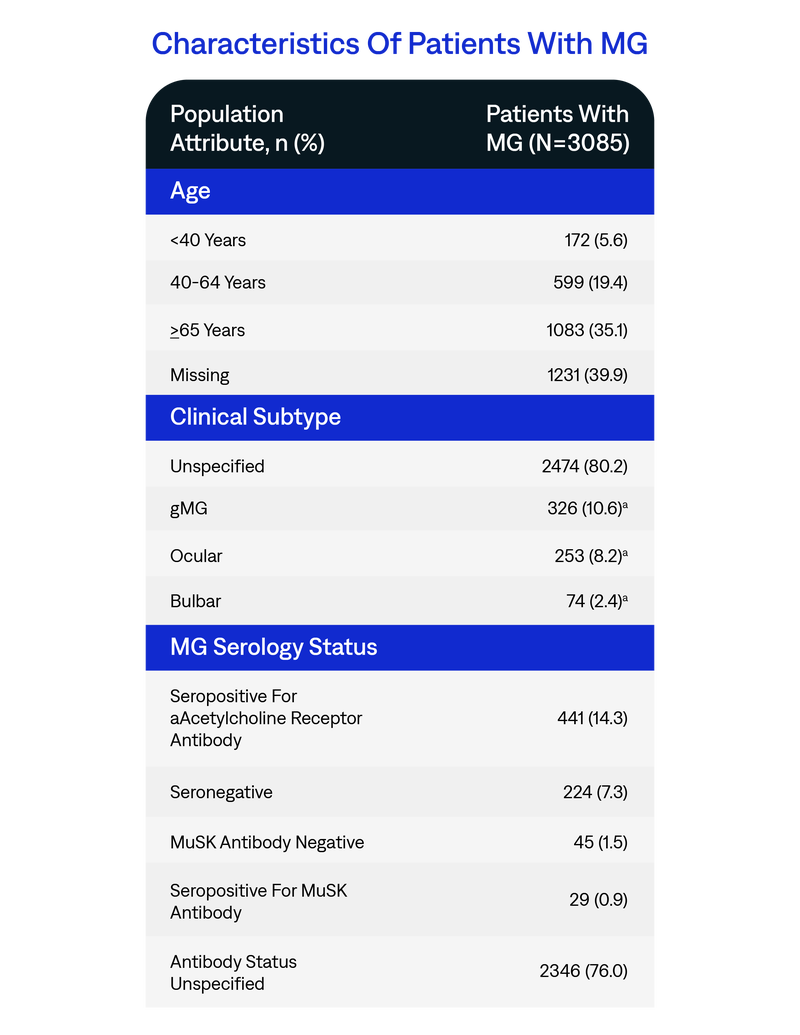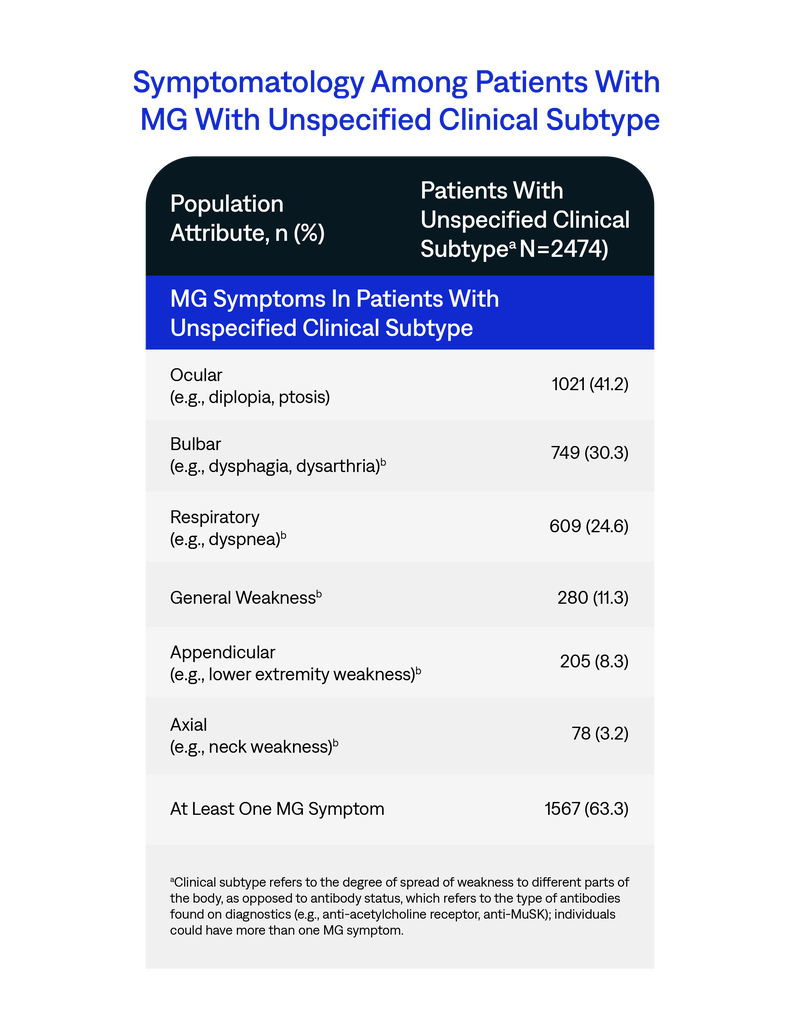
This poster was originally presented at MGFA AANEM 2023 on November 1-4 in Phoenix, AZ.
Authors: Jonathan Darer, MD, MPH, Jacqueline Pesa, PhD, MPH, Zia Choudhry, MD, Alberto E. Batista, PharmD, MS, Purva Parab, PhD, Xiaoyun Yang, MS, and Raghav Govindarajan, MD
Affiliations: Health Analytics, LLC, Clarksville, MD; Janssen Scientific Affairs, LLC, Titusville, NJ, USA; Janssen Pharmaceutical Companies of Johnson & Johnson, and Hospital Sisters Health Systems Medical Group
Myasthenia gravis (MG) is a rare chronic autoantibody-mediated neuromuscular disorder affecting approximately 60,000 individuals in the United States. The objective of this study is to assess the feasibility of identifying meaningful MG clinical subtypes from neurologist clinical progress notes.

